Gymnocalycium - an unusual cactus in the shape of a ball, a native of the desert places of South America. It got its name due to unusual colors on a smooth scaly leg. The group of hymnocalyciums is quite diverse, and sometimes it is necessary to wait several years to identify a particular plant. It is after such a period of time that the plant blooms, and its stem takes on a certain shape.
Blooming cacti in one pot - the so-called hymnocalicium mix - a beautiful and elegant spectacle. At home, it does not require special care, which is why the hymnocalicium mix is quite widespread among gardeners. Such a composition grows in any conditions and can adapt to a diverse environment.
Among the fans of this plant, there is an opinion that the cactus absorbs all the negative energy that is present in the house, and also neutralizes the negative energy and the feelings of the people next to it. Therefore, such an unusual flower or their group can be placed in any room of the house, and even wound up at work.
Content
Characteristics of hymnocalcium, names and description of species
The stem of the plant has a spherical shape and is colored, depending on the species, in brown, gray, gray-green or brown-green hue. The body is ribbed, covered with bunches of curved spikes of different sizes - at the edges they are shorter, within 13-15 mm, in the middle of the spines can reach three centimeters in length.
Only adult hymnocalicium blooms from spring to autumn. The flowers are located at the top, have a shape resembling a bell and consist of several rows of elongated petals. The flowers are painted in a variety of ways, they are mainly red, white, cream, yellow, pink.
Cactus bears fruit. Its fruit has a rounded elongated shape resembling an egg, and can be colored red, green or purple.
The spherical shape of the stem is inherent in young plants, and as it grows, the body becomes covered with ribs and becomes more elongated. Depending on the variety, the size of the hymnocalicium ranges from 2.5 to 30 centimeters.
Under natural conditions, it grows to 100 species of this cactus, while at home it is cultivated much less - about 15. The list of the most popular species with names consists of only a few items, in the photo you can see their differences from each other.
Mikhanovich
It is the most common indoor type of hymnocalicium. It has a small size - up to five centimeters, and pronounced embossed ribs. The color of the trunk varies from green to brown. Long curved spines can reach 1 centimeter.
Blooms in large flowers, painted in white, pink or yellow. Complex specific care in the apartment does not require.
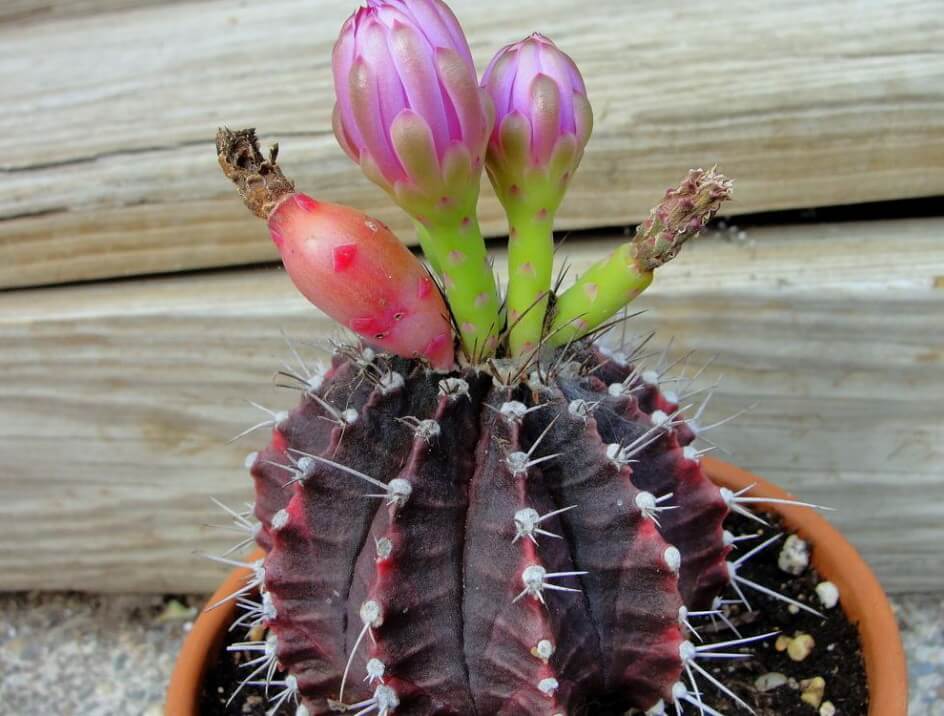
It is noteworthy that this species was the basis for breeding work, the result of which was the emergence of hybrid varieties with bright trunks of purple, red and yellow flowers of the Friedrich hymnocalycium.
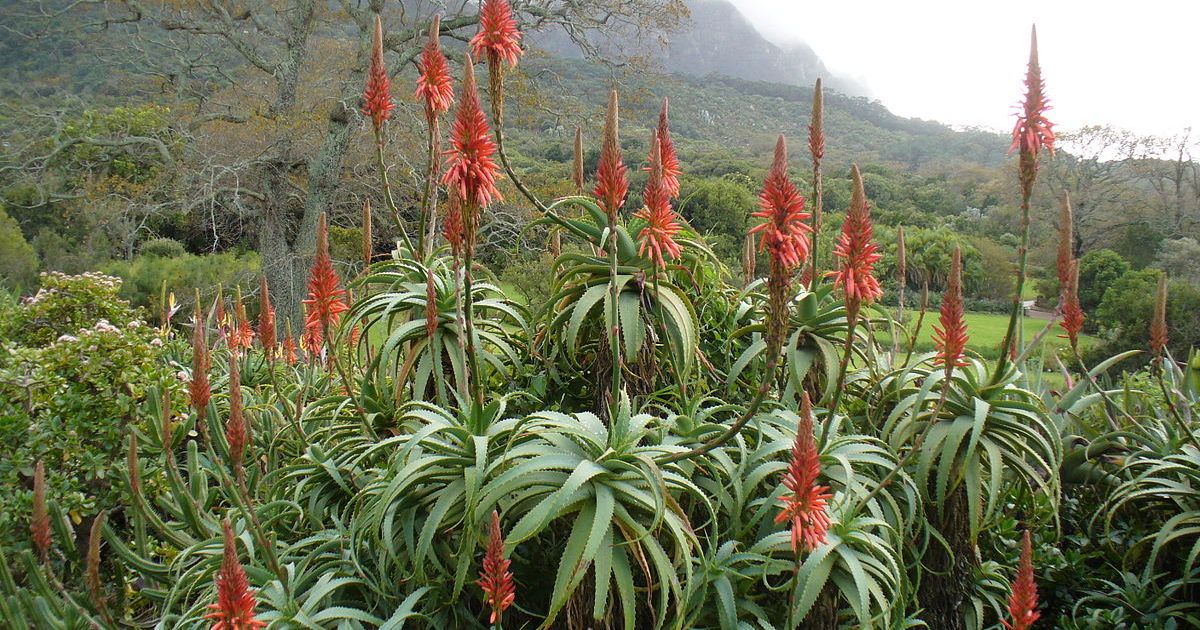 You may be interested in:
You may be interested in:Friedrich or Japanese
The appearance of Frederick, also known as Japanese, owes its origin to the work of Japanese breeders. It was they who bred a species of cactus devoid of chlorophyll. A distinctive feature of the Friedrich cactus is the diverse color of the trunk - red, burgundy, yellow, orange. This plant looks unusual and bright, but does not grow on its own, but requires vaccination.
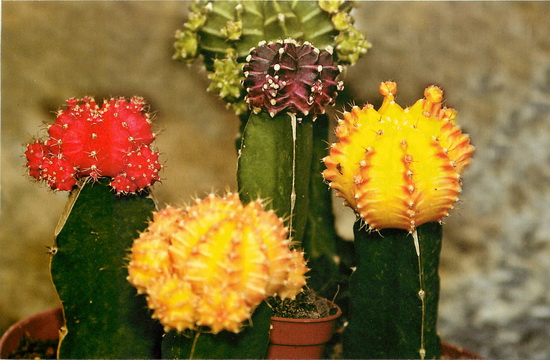
The ribbed stem has a spherical shape up to 10 centimeters in size, the brown spines are curved, and the flowers can be pink or purple.
Sallo
Sallo species is the largest, reaching 30 cm in adulthood. The barrel has the shape of a bumpy ball. Spines are long, lilac-gray. Flowers, in contrast, are medium-sized, white, red or pink.
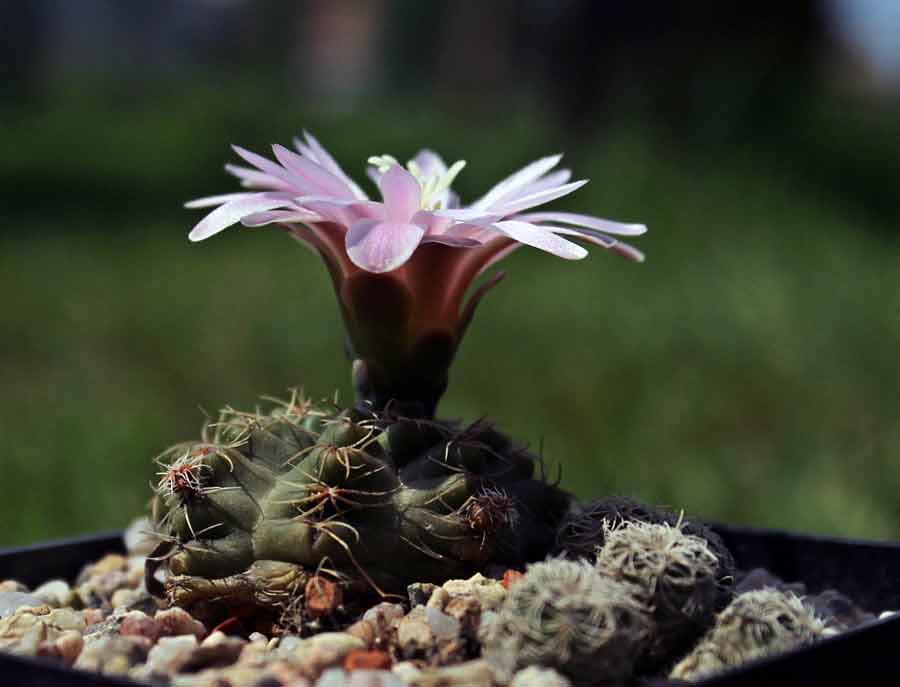
The ribbing of the stem depends on the overall size of the cactus - the larger it is, the greater the number of ridges will be on the trunk.
Reduktum
The species reductum, more commonly known as humpback, is a large cactus that changes the shape of the stem with age. A young representative of this species has a spherical trunk, painted in a bluish gray-green color. With age, the stem takes an elongated shape, and can grow in height up to half a meter. The thorns are straight, long, one central significantly exceeds the others in size.
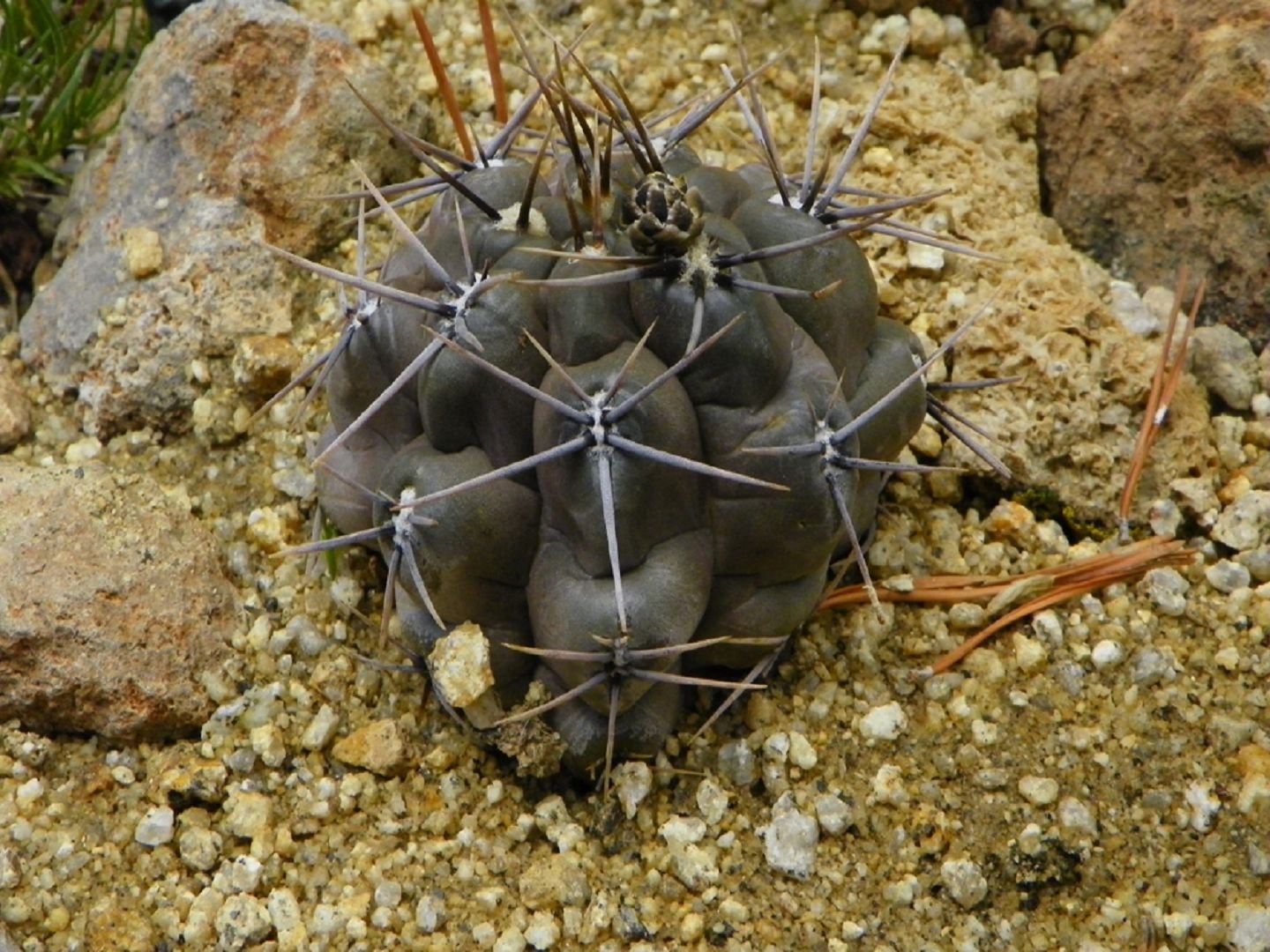
The ribs on the trunk are marked with furrows, because of this the stem looks composed of segments. Flowers are mostly cream in color.
The reductum species has a specific variety called nigrum. It differs in almost black stem color and black spines.
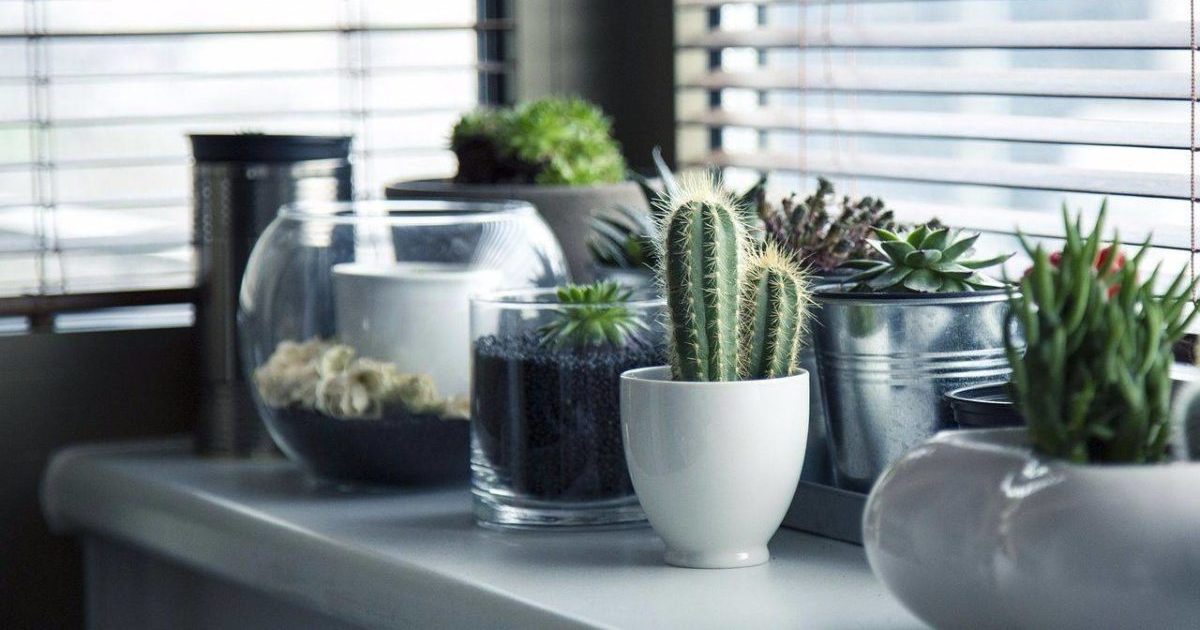 You may be interested in:
You may be interested in:Baldianum
Baldianum, or Balda, is a cactus with a greenish-blue tint of the trunk, having the shape of a flat ball. Its height can be up to 10 cm, width - up to 9 centimeters. Ribs are flat, separated by grooves. With age, the ribs acquire a tuberous shape.
Spines are pinkish-gray or ashen. The flowers are medium-sized, up to 5 cm, of various shades - white, orange, red.
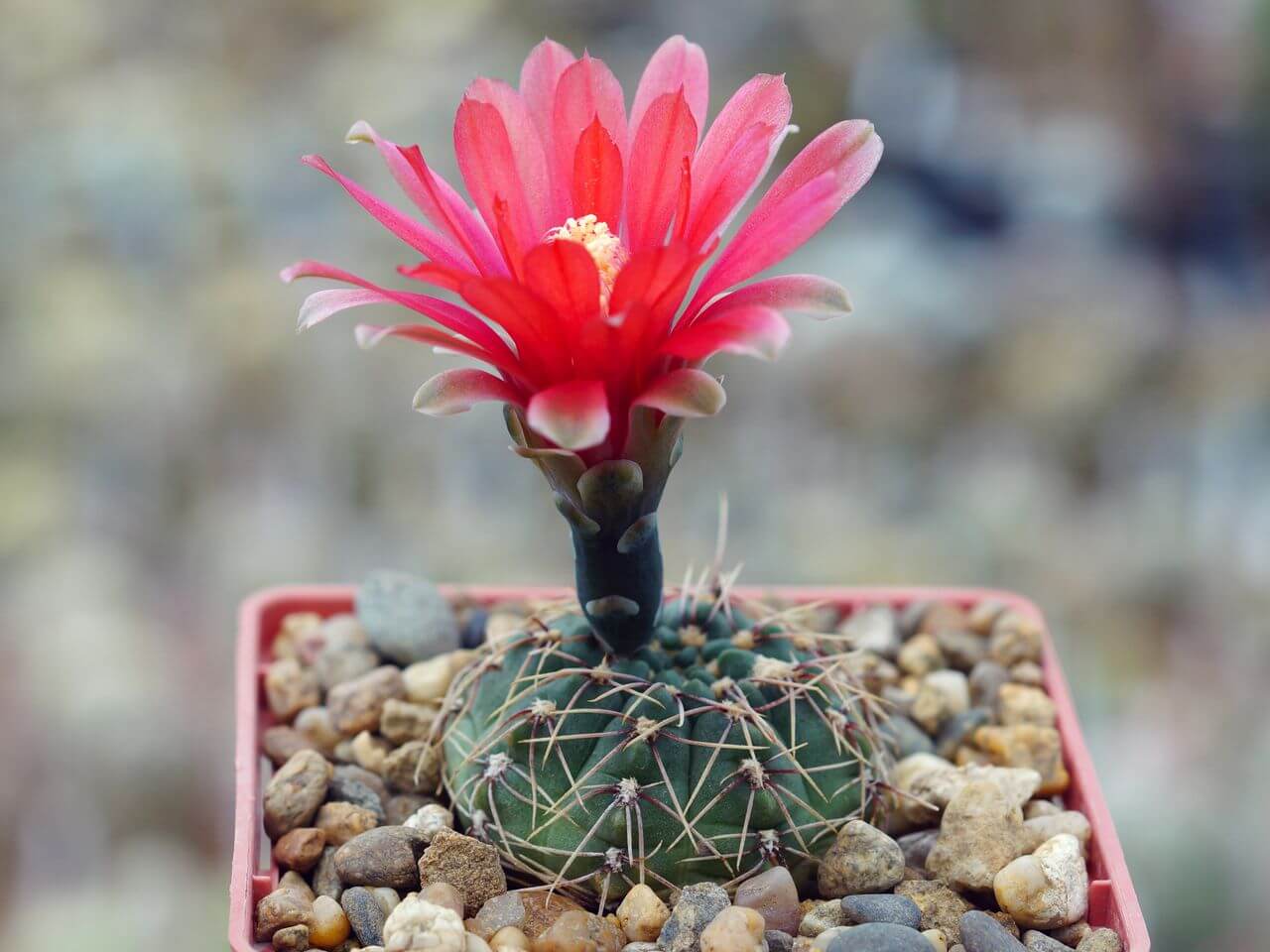
There are other varieties suitable for growing at home. Among them, the most popular are Melkotsvetkovy, Nude, Bruja, Rubra and other species.
What is a hymnocalcium mix and how to create a composition?
A fancy combination of round small cacti in one pot is known as the "hymnocalycium mix." The variety of colors of the stems, their shapes, the riot of colors of flowering cacti looks incredibly attractive and spectacular.
When creating a composition, cacti are usually used with a diameter of not more than five centimeters. Connect rounded and elongated species, grafted, blooming in different shades. Care for such a composition is the same as for a single cactus.
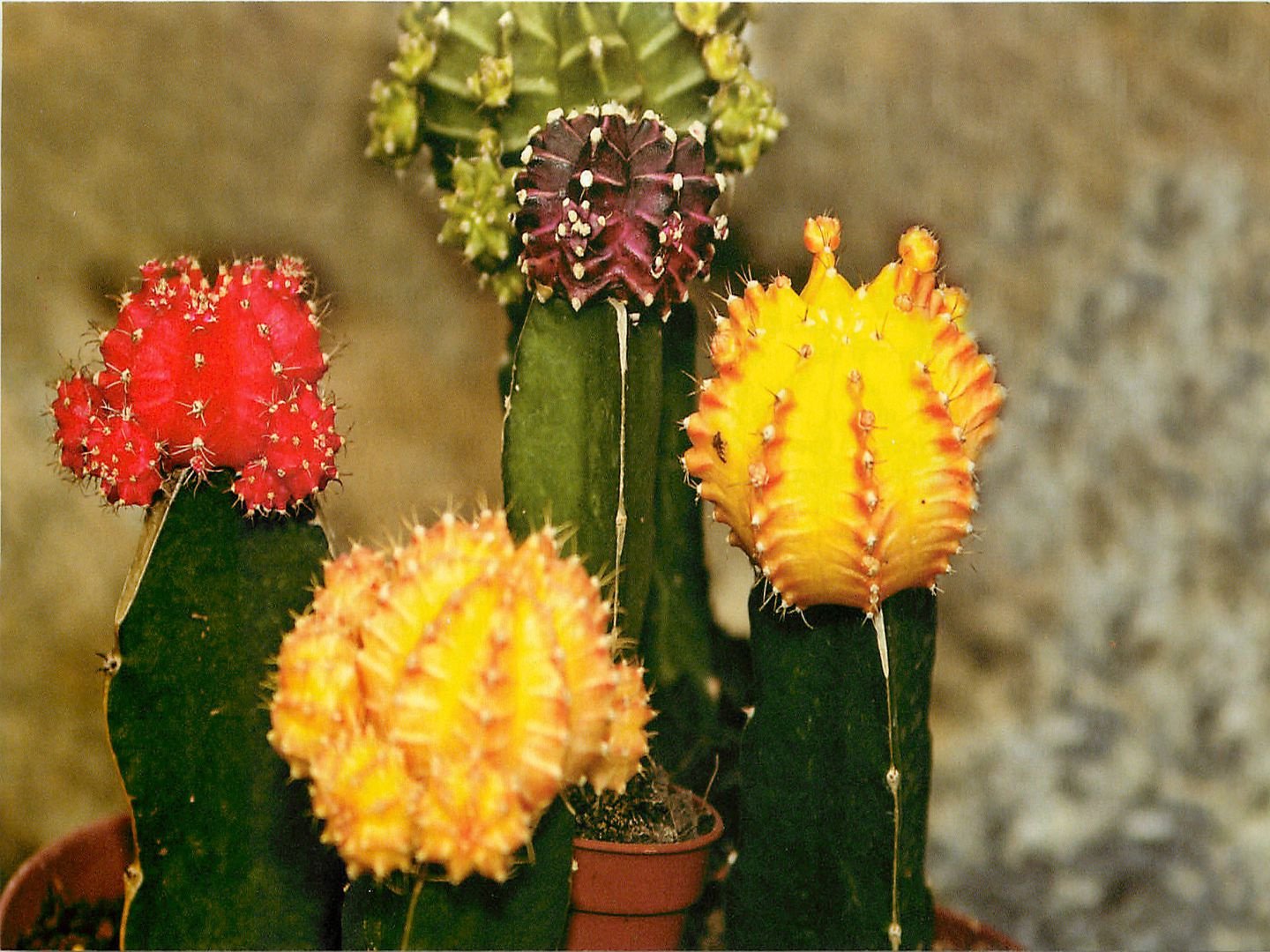
Plants are planted in one pot, trying to arrange them at a certain distance from each other - up to 2-3 centimeters. When the time comes, they can be moved to a larger pot.
Caring for the hymnocalcium at home
Coming from the arid areas of South America, the hymnocalycium is easy to care for and unpretentious. The main feature of its content is the creation of conditions as close to natural as possible.
Soil and pot selection
Cacti of this species grow slowly, which means they do not require frequent transplants. Do this no more than once every two to three years.It’s possible to understand that a plant requires a transplant by its roots - when they appear from the lower holes of the pot, then it’s time to choose a new one. It should be slightly larger than the previous one and exceed it in diameter by no more than 2 centimeters.
At the bottom of the tank must be placed drainage, and then fill it with fresh soil. It can be a ready-made substrate for succulents, or it can be prepared independently. To prepare the soil at home, mix peat, sheet soil, turf and sand, preferably large, and some charcoal. All components are combined in proportions of 2: 3: 2: 2: 2: 1.
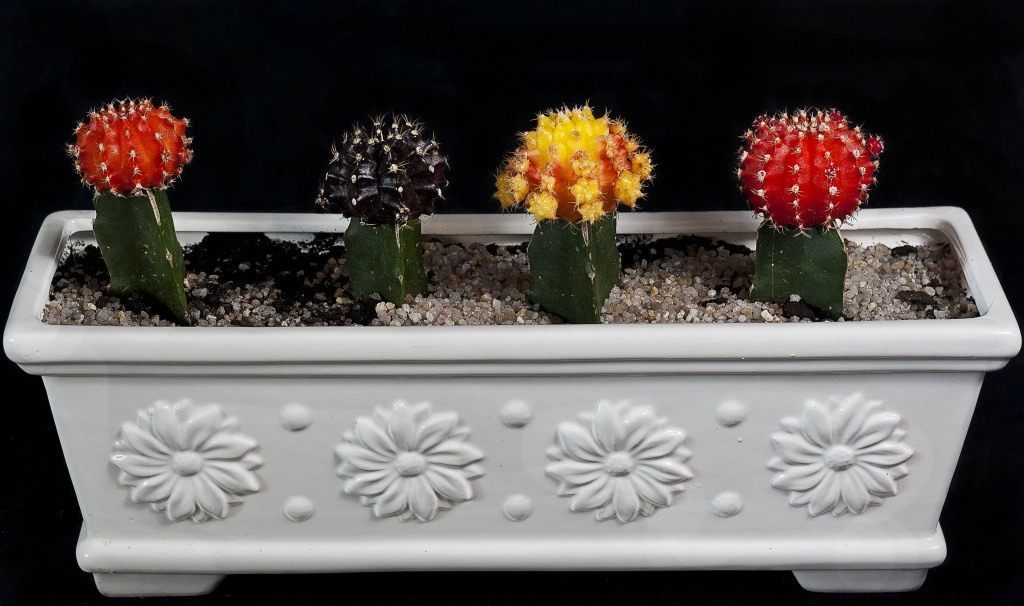
After removing the cactus from the pot, it is necessary to clean the roots of the ground, dead areas, and rinse with the trunk in warm or hot water. For several days, the cactus is left without soil to dry, and then placed in a fresh substrate. After transplanting, it is necessary to withstand a week without watering.
Lighting
At different times of the year, the requirements for lighting in the hymnocalycium are different. In summer, he needs a bright, but diffused light. It is better not to place it in the light of direct sunlight, otherwise the plant may suffer from burns. In winter, the flower must be additionally lit.
As for the temperature regime, in the summer the cactus transfers heat and even heat without problems. In winter, 12-15 degrees is considered the best temperature. Winter coolness will not harm him if the thermometer does not fall below 5 degrees.
Watering and feeding
Relative dryness of the soil - natural conditions for a cactus. During the growth period, he needs regular, but not excessive watering. Moisture should not stagnate in the soil, the soil should completely dry. In autumn, watering intensity is reduced, in winter it should be minimal.
For irrigation take the settled water at room temperature. It is important to rid her of lime, as it is fatal to the flower. It is also recommended to add a little lemon juice to the water for irrigation - acidified water favorably affects the well-being of the plant.
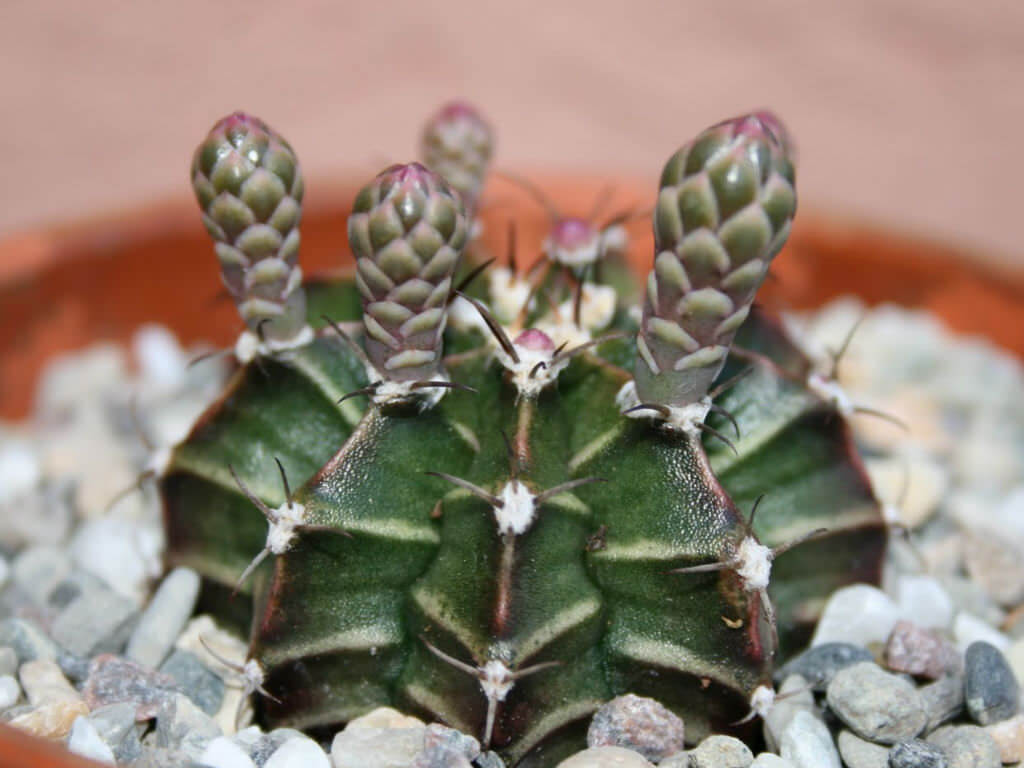
For top dressing, it is advisable to use ready-made mineral fertilizers, without organic substances. Fertilizers are applied during the growing season; in winter and autumn, they do not fertilize. When choosing a fertilizer, they monitor the small content of nitrogen in its composition. To prepare the solution, the concentration of nutrients must be halved compared to the recommended in the instructions.
Wintering
In autumn, the cactus begins a dormant period, and continues until the end of winter. At this time, the pot is rearranged in a room with a low temperature - within +14 degrees. For these purposes, a glazed loggia is quite suitable.
In winter, the cactus is watered only after the soil has dried - about 1 time per month, not more often. They do not produce fertilizing, he does not require spraying. With the onset of spring, the plant is sprayed or washed with a shower and placed in a more lighted place.
Graft
Mandatory vaccination is necessary only for a cactus of the Friedrich species - it does not grow on its own, as it is deprived of chlorophyll. Other varieties do not require vaccination.
For the procedure, two absolutely healthy plants are chosen. They make the same even sections with a sterile knife, which quickly connect to each other immediately after circumcision, precisely combining cambial rings.
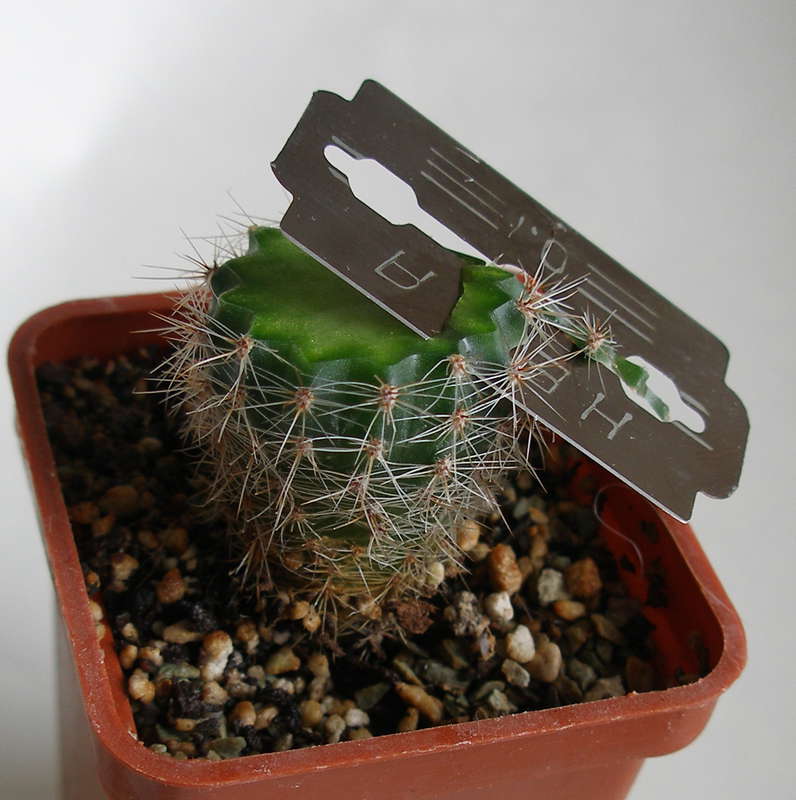
For better fastening of the parts, they must be pressed tightly to each other, and then tied, it is better to fix them with a thin rubber band. When tied, the cactus is left for up to 10 days. You can cover them with a plastic or glass jar, a bag.
Diseases, pests and their control
Most often, at home, the hymnocalycium suffers from a spider mite, rot and a mealybug. As in the case with other plants, diseases arise due to a violation of the rules for keeping flowers at home.
The spider mite attacks, as a rule, young individuals. In adults, the skin is too dense. A sign of the pest are spots, "rusty" and dry. It is enough to wash a single plant in warm water and treat it with alcohol. When keeping a large number of plants in the house, they must be treated with an insecticide. The causes of the disease are dry indoor air.
Mealybug infects the root system and trunk. Signs of the parasite are the lack of flowering and slow flower growth. To detect pests, a cactus must be dug and rinsed in running hot water for about 15 minutes. If the disease has affected the trunk, it is necessary to rinse the entire plant. After the procedure, it is recommended to pour the soil with an insecticide.
Rotting of the roots more often occurs due to heavy watering or excessively nutrient soil. Only the root system suffers. The plant does not bloom and slows growth. To get rid of the disease, the affected areas of the roots are cut off, and the plant is washed in hot water. After processing with charcoal or fungicide and left to dry for several days. Then root.
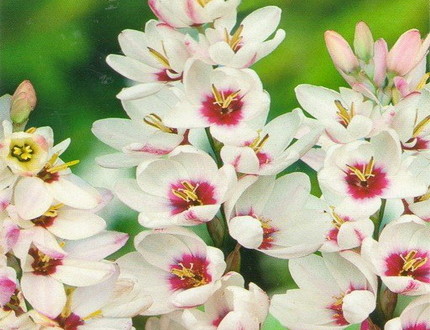 You may be interested in:
You may be interested in:How to propagate a flower at home
To multiply the hymnocalicium at room conditions, the method of layering and seeds are used.
Reproduction by seeds results in stronger plants, but this is not the easiest way. The best time to carry out the procedure is spring. Prepared planting material is placed in pre-moistened and nutritious soil, the same composition as for adults. Preliminary, the substrate is heated in the oven, cooled, and then moistened.
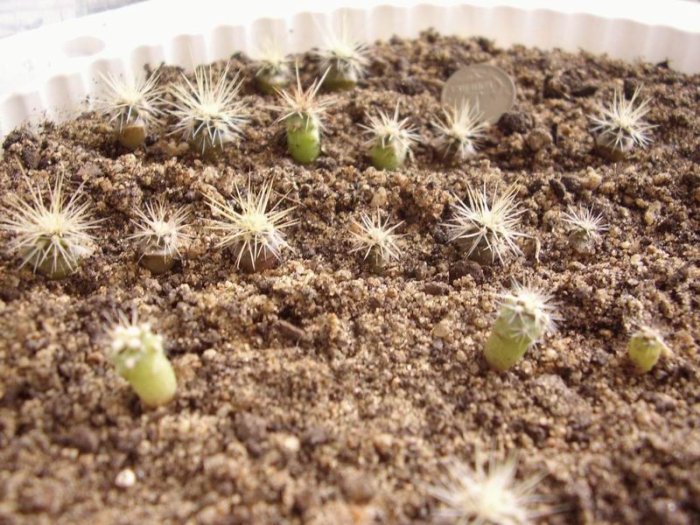
The layering method is simpler, but it is used for all species that give children. To do this, the processes are separated from the mother's cactus, dried for several days and rooted in the usual soil for the plant. Usually layering take root well, and take care of them in the same way as adult cacti.
Common Growing Questions
Growing on its own or in the form of a mix - the hymnocalicium is unusual and incredibly beautiful. Proper care and a set of simple procedures will certainly lead to the annual flowering of this lovely prickly ball.

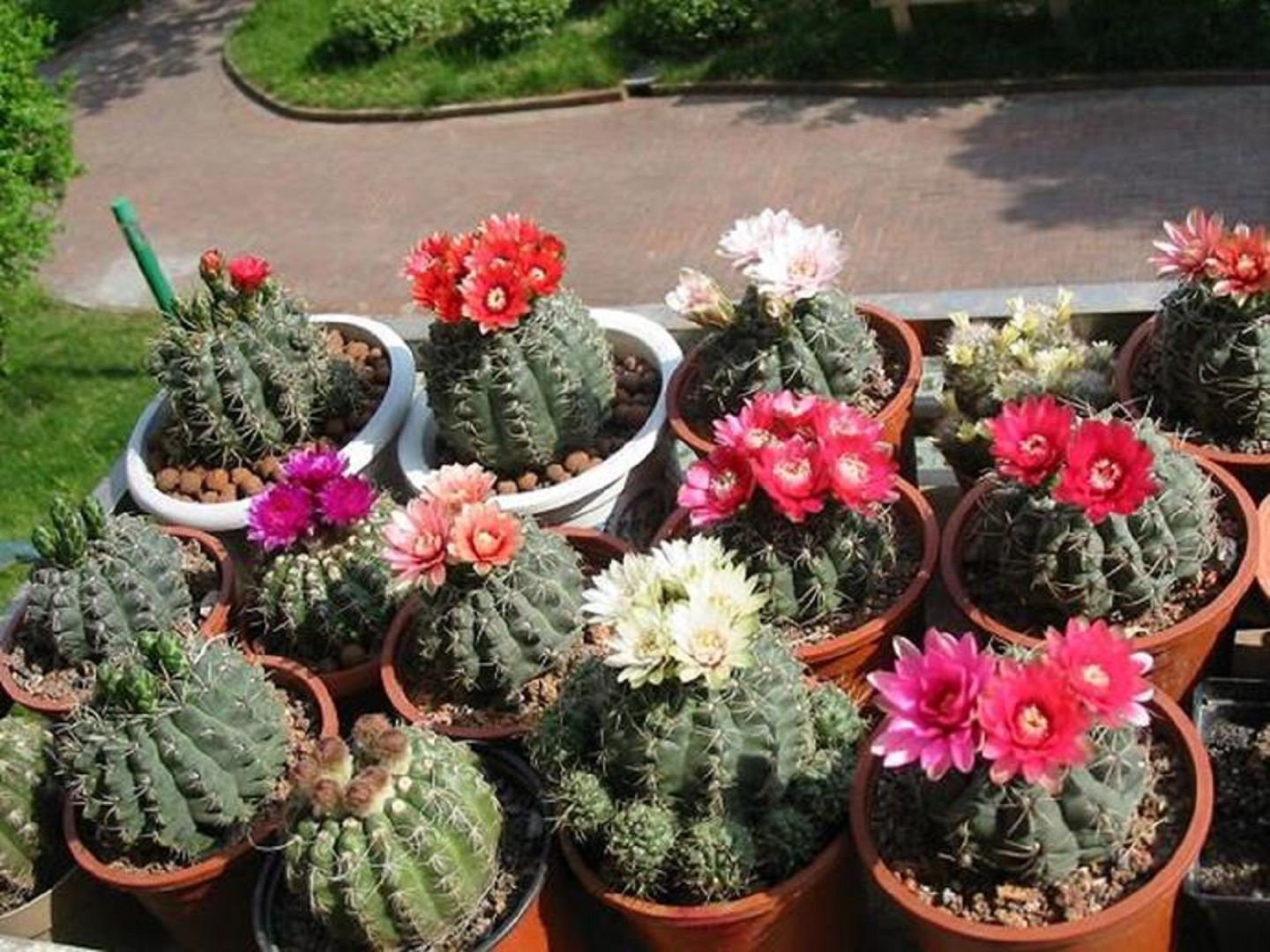
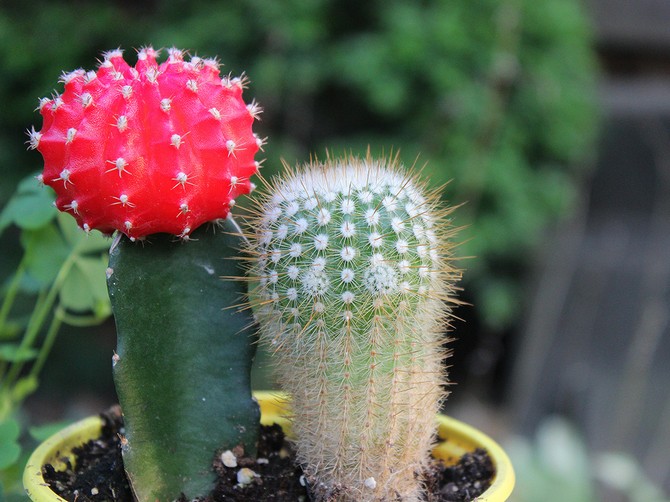
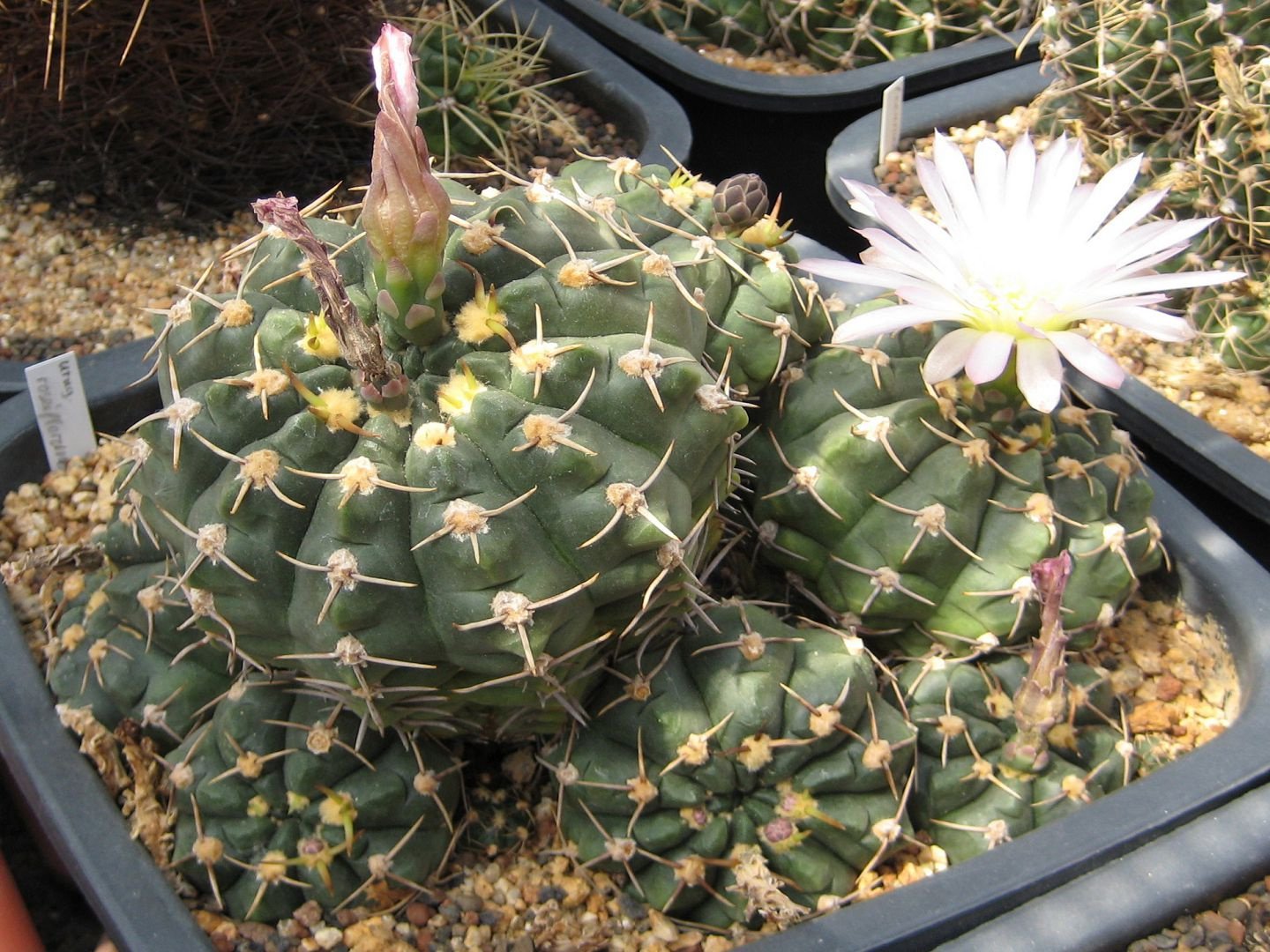


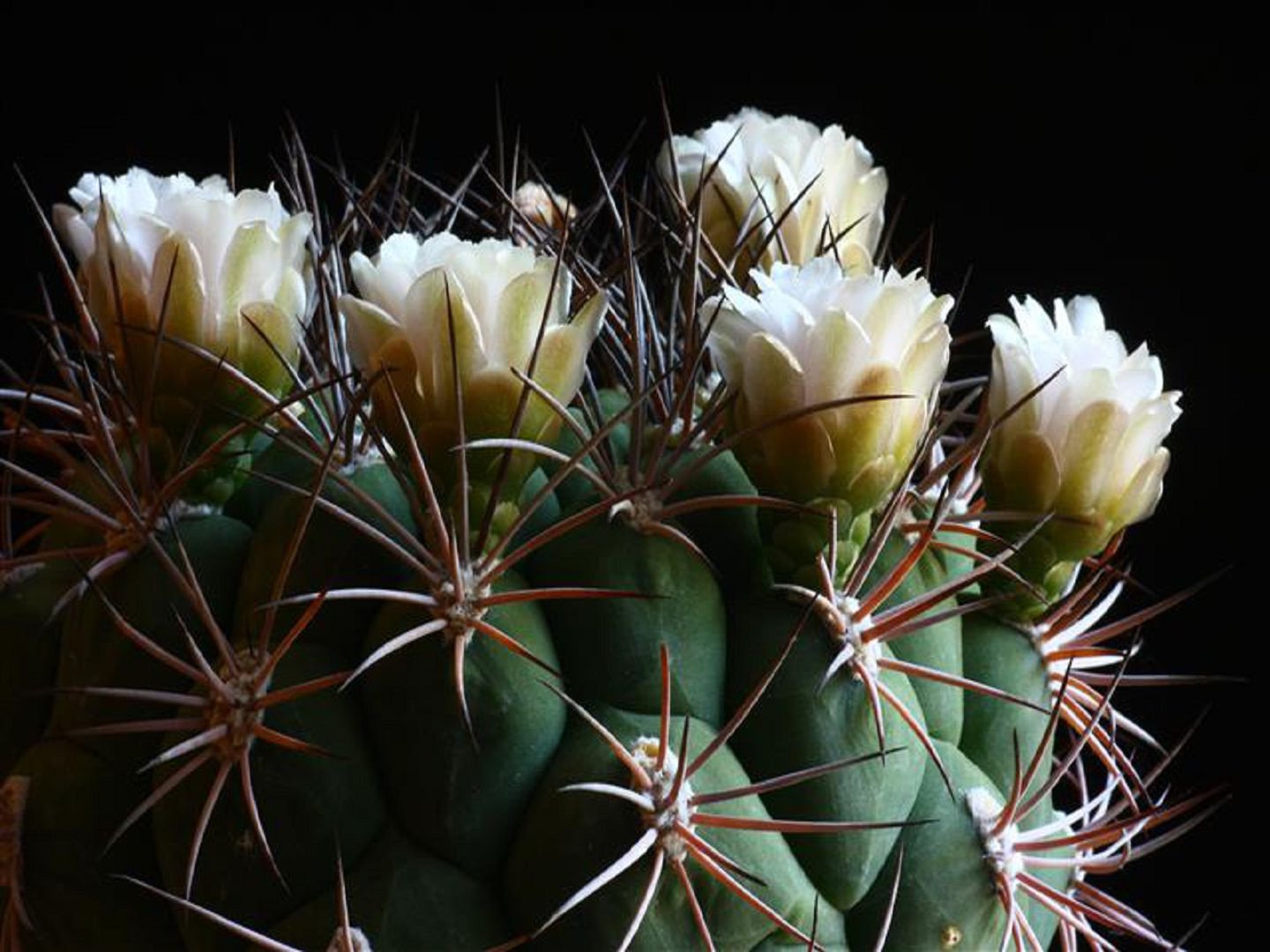



 Sow in the ground, without seedlings: 10 beautiful and unpretentious flowers
Sow in the ground, without seedlings: 10 beautiful and unpretentious flowers Platicodon planting and outdoor care
Platicodon planting and outdoor care Hosta - planting and care in the open ground in the Urals
Hosta - planting and care in the open ground in the Urals Oleander - care and growing at home
Oleander - care and growing at home